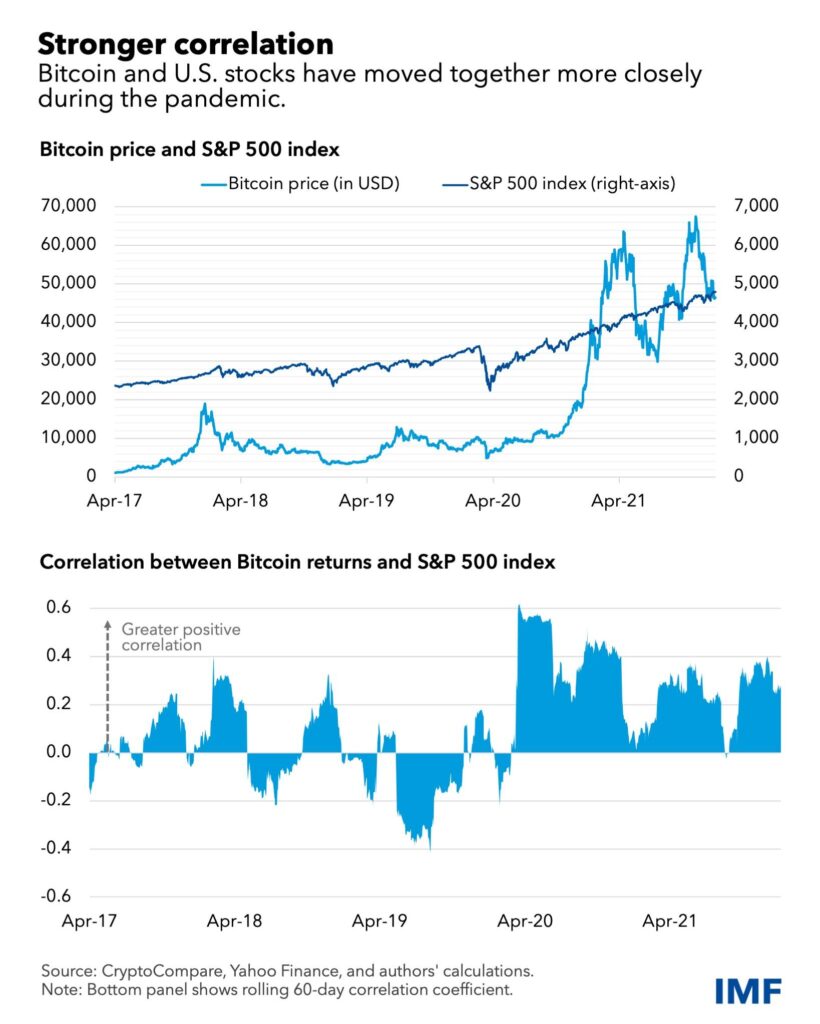In the vast, turbulent ocean of cryptocurrency, a select few colossal creatures-known as crypto whales-hold the power to create waves that ripple through the market. These digital giants, with wallets overflowing with millions of dollars in assets, can ignite sudden surges or swift crashes with a single, strategic move. But who are these mysterious players, and what drives their decisions? As the crypto landscape evolves at lightning speed, understanding the actions and motivations of whales has become essential for anyone navigating these unpredictable waters. Today, we dive deep into the world of crypto whales to uncover what truly moves the market and what it means for investors on all levels.
Table of Contents
- Understanding the Influence of Crypto Whales on Market Dynamics
- Tracking Whale Movements Through Blockchain Analytics
- The Psychology Behind Whale Trading Strategies
- How Retail Investors Can Navigate Whale-Driven Volatility
- Practical Tips for Responding to Whale Market Signals
- Frequently Asked Questions
- Wrapping Up

Understanding the Influence of Crypto Whales on Market Dynamics
Crypto whales, those individuals or entities holding massive amounts of cryptocurrency, wield extraordinary power in shaping market trends. Their large-scale transactions can trigger ripple effects, influencing everything from price volatility to investor sentiment. When a whale moves a significant portion of assets, it often signals shifts that smaller traders eagerly watch, hoping to anticipate the next big market move.
Unlike traditional markets where institutional players dominate, the relatively nascent crypto space allows these whales to sway prices more abruptly. This is because liquidity varies greatly across different tokens, and a single whale’s decision to buy or sell can cause dramatic price swings. These movements are tracked meticulously by analysts and bots alike, as they often precede larger market trends or signal potential corrections.
Understanding the behavior of whales involves recognizing patterns such as:
- Accumulation phases: Gradual increase in holdings, often indicating bullish sentiment.
- Distribution phases: Selling off assets to lock in profits, potentially leading to price drops.
- Sudden large transfers: Moving coins between wallets, sometimes to exchanges, which can precede a sell-off.
| Whale Action | Market Impact | Typical Outcome |
|---|---|---|
| Bulk Purchase | Price Surge | Increased Bullish Momentum |
| Large Sell-off | Price Drop | Market Correction or Panic |
| Token Redistribution | Unclear | Market Uncertainty |
Tracking Whale Movements Through Blockchain Analytics
In the vast ocean of cryptocurrency, the movements of a few colossal holders – often referred to as “whales” – can create ripples that turn into tidal waves. By leveraging blockchain analytics, investors and analysts are now able to trace these giants’ transactions with unprecedented precision. Every transfer, no matter how large, is etched permanently on the blockchain, offering a transparent trail that can reveal the intentions behind these market-shaking trades.
Advanced analytics platforms dissect this data, unearthing patterns that hint at whale behavior. For example, sudden large transfers to exchanges might signal an impending sell-off, while accumulation in cold wallets can indicate long-term bullish sentiment. These insights allow traders to anticipate market shifts before they fully unfold, turning raw blockchain data into strategic foresight.
- Whale Wallet Monitoring: Identifying and tracking high-net-worth addresses.
- Transaction Timing: Correlating whale moves with price volatility.
- Exchange Flows: Watching inflows and outflows that hint at market entry or exit points.
| Whale Activity | Market Impact | Frequency |
|---|---|---|
| Massive Transfer to Exchange | Price dip | Occasional |
| Large Accumulation in Cold Wallet | Price stability or rise | Frequent |
| Rapid Multi-Address Movements | Market uncertainty | Rare |
The Psychology Behind Whale Trading Strategies
At the heart of massive crypto trades lies a complex psychological game where emotions and strategy intertwine. Whale traders are not just executing transactions; they are manipulating perceptions, exploiting market sentiment, and capitalizing on fear and greed cycles. Their decisions often stem from a deep understanding of herd behavior, using patience and timing as their most potent tools.
Key psychological drivers influencing whale movements include:
- Control and Influence: Whales thrive on their ability to steer market trends, often sparking waves of panic selling or euphoric buying.
- Risk Management: Despite their size, whales are cautious, leveraging psychological resilience to endure volatility and wait for optimal entry or exit points.
- Information Asymmetry: Access to insider knowledge or advanced analytics allows whales to anticipate market moves before the majority reacts.
Unlike typical retail traders, whales often operate with a long-term vision, remaining unemotional in the face of short-term market chaos. This detachment enables them to exploit smaller traders’ impulsive behaviors, turning market fluctuations into opportunities for profit. Their strategic patience contrasts sharply with the often reactive nature of everyday investors.
| Psychological Trait | Whale Behavior | Market Impact |
|---|---|---|
| Patience | Waits for ideal price levels | Creates price stability or sudden shifts |
| Confidence | Executes large trades decisively | Triggers trend reversals |
| Strategic Thinking | Plans multi-step market maneuvers | Manipulates market sentiment |

How Retail Investors Can Navigate Whale-Driven Volatility
Retail investors often find themselves at the mercy of massive crypto transactions made by whales, those holding vast amounts of digital assets. While whales can trigger sharp price swings, understanding their behavior can empower smaller investors to make informed decisions rather than reacting impulsively. One key approach is to monitor whale activity through blockchain explorers and dedicated tracking tools. These resources provide real-time data on large transfers, enabling retail participants to anticipate potential volatility and adjust their strategies accordingly.
Another important tactic is diversification. By spreading investments across different cryptocurrencies and sectors within the blockchain ecosystem, retail investors can reduce exposure to sudden market movements caused by whale actions. This strategy minimizes risk and avoids the pitfall of overdependence on a single asset whose value might be disproportionately influenced by a whale’s trade.
Risk management becomes crucial when facing whale-driven volatility. Setting stop-loss orders and defining clear exit points can protect portfolios from unexpected downturns. Additionally, maintaining a long-term perspective often helps retail investors avoid panic selling during transient price dips. Whales might cause temporary turbulence, but the underlying fundamentals of promising projects usually prevail over time.
- Track Whale Movements: Use tools like Whale Alert or blockchain analytics platforms.
- Diversify Investments: Avoid putting all funds into a single token.
- Implement Risk Controls: Stop-loss orders and position sizing are vital.
- Stay Informed: Follow market news and whale activity insights.
| Strategy | Benefit | Tool/Example |
|---|---|---|
| Whale Tracking | Early market movement signals | Whale Alert, Nansen |
| Diversification | Reduced asset-specific risk | Portfolio spread over multiple tokens |
| Stop-Loss Orders | Limits downside losses | Exchange trading features |
| Long-Term Holding | Avoids panic selling | Focus on project fundamentals |

Practical Tips for Responding to Whale Market Signals
Recognizing whale market signals can feel like deciphering a code, but with the right approach, you can turn these massive moves into strategic opportunities. First, always monitor on-chain data closely. Tools like blockchain explorers and whale tracking platforms offer real-time insights into large transactions. When you spot a sudden transfer of tokens to or from an exchange, it often signals potential market shifts-either a big sell-off or a strategic buy-in.
Next, avoid reacting impulsively. Whale moves can trigger rapid price fluctuations, but not all represent a trend change. Use technical analysis in tandem with whale data to validate signals. Look for confirmation through volume spikes, candlestick patterns, and support-resistance tests before making your move. This dual-layered approach helps filter out noise and reduces the risk of chasing false alarms.
- Set alerts: Utilize apps or bots to notify you of large transactions in key cryptocurrencies.
- Diversify exposure: Don’t place all bets on one asset just because a whale is active.
- Stay informed: Follow credible crypto news sources and social channels where whale activity is discussed.
| Signal Type | Potential Meaning | Suggested Action |
|---|---|---|
| Large Transfer to Exchange | Possible sell pressure incoming | Consider tightening stop-loss |
| Whale Accumulation Off-Exchange | Bullish sentiment building | Evaluate entry points |
| Sudden Token Dump | Market panic or manipulation | Wait for stabilization before trading |
Frequently Asked Questions
Q&A: Crypto Whales – What Moves the Market Today?
Q1: Who exactly are crypto whales?
A1: Crypto whales are individuals or entities holding large amounts of cryptocurrency, often controlling a significant portion of a coin’s circulating supply. Their trades can influence market prices due to the sheer volume they command.
Q2: Why do crypto whales have such a strong impact on the market?
A2: Because whales hold massive stakes, their buying or selling can create ripples-or tsunamis-in price action. A single whale’s move can trigger panic selling, FOMO buying, or shifts in market sentiment, amplifying volatility.
Q3: How do whales decide when to move their assets?
A3: Whales may act based on market trends, upcoming news, or strategic profit-taking. Some follow technical signals, while others move quietly to avoid detection. Occasionally, coordinated whale activity hints at collective strategies or market manipulation.
Q4: Can retail investors track whale activity?
A4: Yes. Blockchain transparency allows anyone to monitor large transactions via whale tracking tools and on-chain analytics. However, interpreting these movements requires context-large transfers don’t always mean imminent price shifts.
Q5: What recent whale behaviors are shaping today’s crypto markets?
A5: Currently, some whales are consolidating positions amid regulatory uncertainty, while others are diversifying into emerging tokens. Increased whale accumulation has buoyed major coins, yet sudden whale sales have sparked short-term dips in altcoins.
Q6: Should average investors follow whales’ lead?
A6: While whales’ moves can provide clues, mimicking them blindly is risky. Whales often have deeper market insights and access to privileged information. Retail investors benefit most by combining whale signals with their own research and risk management.
Q7: How might whale activity evolve in the coming years?
A7: As crypto markets mature, whale strategies may become more sophisticated, leveraging AI and algorithmic trading. Regulatory frameworks might also influence whale behavior, pushing for greater transparency and reducing manipulative practices.
Q8: Is whale influence ultimately good or bad for crypto markets?
A8: It’s a double-edged sword. Whale activity can provide liquidity and stabilize markets but can also exacerbate volatility and create barriers for smaller investors. Understanding whales helps demystify market movements, fostering a more informed community.
This Q&A explores the enigmatic role of crypto whales-giants in a decentralized sea-shedding light on what truly moves the market today.
Wrapping Up
As the tides of the crypto sea continue to rise and fall, the movements of whales remain a powerful undercurrent shaping the market’s ebb and flow. Understanding these colossal players offers a glimpse into the hidden depths of cryptocurrency dynamics, reminding us that beneath every surge or plunge lies a story of strategy, influence, and sometimes, mystery. Whether you’re a seasoned trader or a curious observer, keeping an eye on the whales’ wake can provide valuable insight into the ever-evolving landscape of digital assets. In the world of crypto, the giants never swim alone-and neither should your attention.

